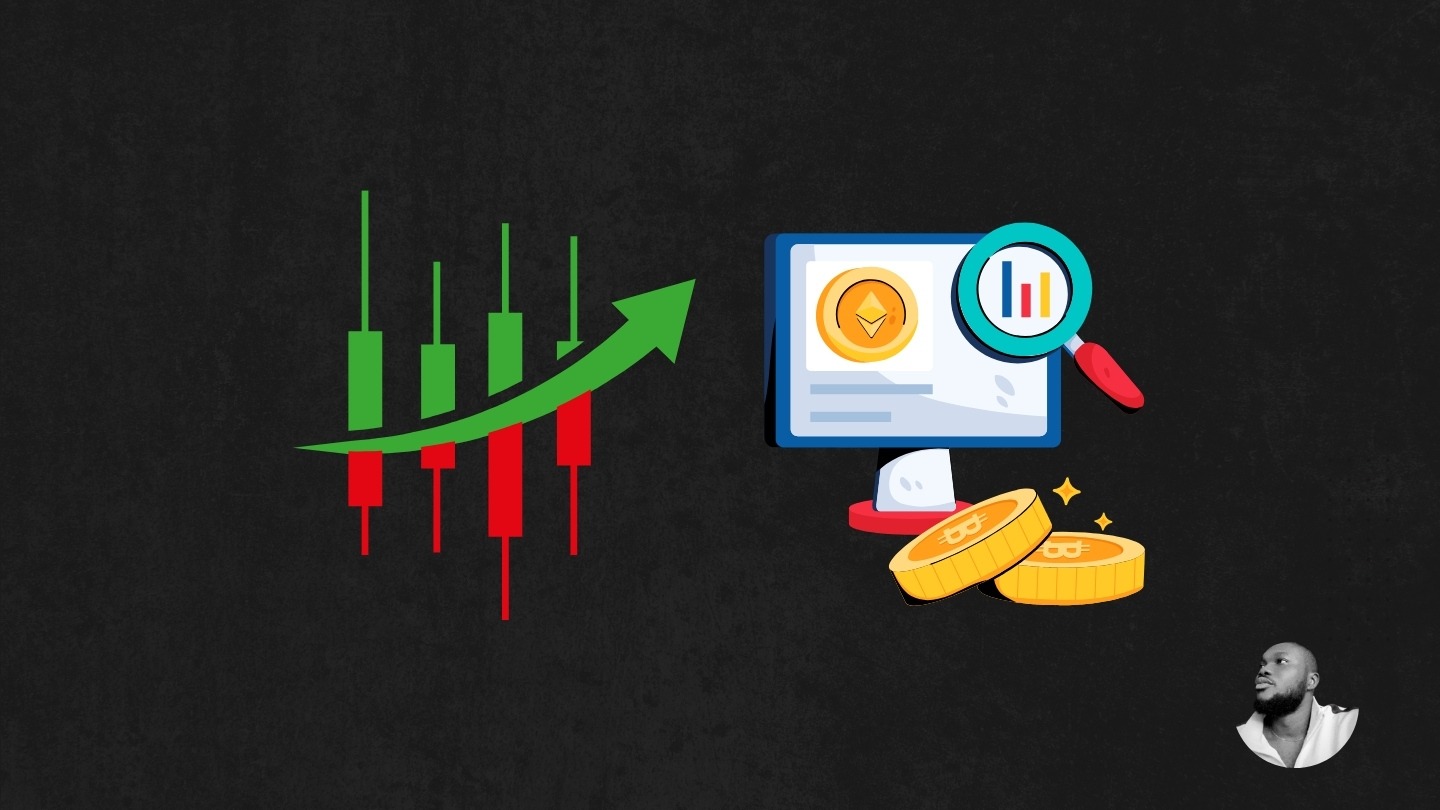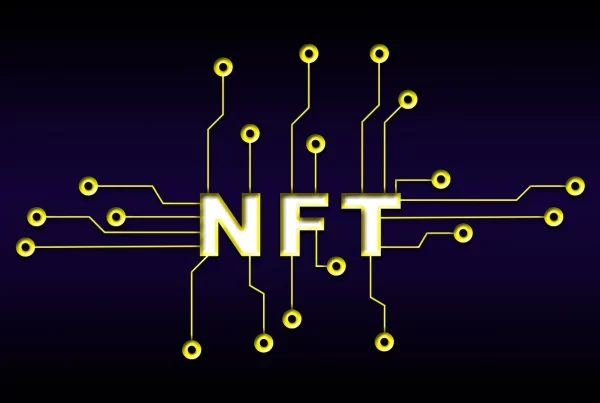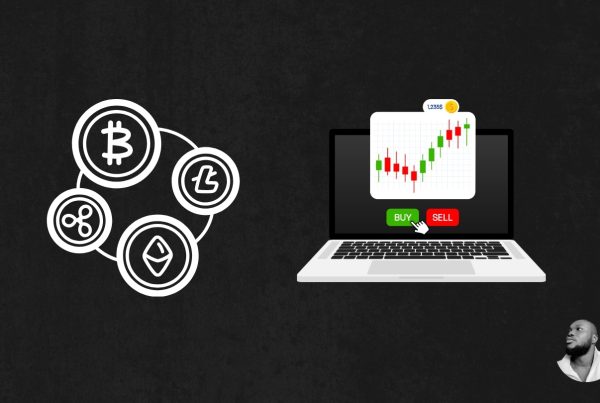How to Analyze Crypto Projects
Analyzing crypto projects is a crucial skill for any investor looking to navigate the volatile and rapidly evolving world of digital currencies. With thousands of projects available, each promising unique solutions and innovations, distinguishing between potential winners and risky ventures requires a systematic approach. This involves a combination of fundamental analysis, technical evaluation, and an understanding of the broader market context. Key research methods include examining the project’s whitepaper, assessing the team and their track record, evaluating the technology and its use case, analyzing the tokenomics, and understanding the competitive landscape. Additionally, staying informed about regulatory developments and community sentiment can provide valuable insights. By employing these research methods, investors can make more informed decisions and better manage the risks associated with crypto investments.
Understanding Whitepapers: Key Elements to Look For
When delving into the world of cryptocurrency investments, understanding the intricacies of a project’s whitepaper is paramount. A whitepaper serves as a foundational document that outlines the technical and strategic aspects of a crypto project, providing potential investors with critical insights into its viability and potential for success. To effectively analyze these documents, investors must be equipped with the knowledge of key elements to scrutinize, ensuring a comprehensive evaluation of the project’s prospects.
First and foremost, the problem statement is a crucial component of any whitepaper. It should clearly articulate the specific issue the project aims to address, offering a compelling rationale for its existence. A well-defined problem statement not only highlights the relevance of the project but also sets the stage for understanding its potential impact. Investors should assess whether the problem is significant enough to warrant a blockchain-based solution and if the proposed approach is innovative and feasible.
Following the problem statement, the solution section should be examined with equal rigour. This part of the whitepaper should detail how the project intends to solve the identified problem, outlining the technology and mechanisms it will employ. Investors should look for clarity and specificity in the proposed solution, ensuring that it is not only theoretically sound but also practically implementable. Additionally, the solution should demonstrate a clear advantage over existing alternatives, whether through enhanced efficiency, cost-effectiveness, or unique features.
Another critical element to consider is the project’s tokenomics. This section should provide a comprehensive overview of the project’s economic model, including the total supply of tokens, distribution mechanisms, and any incentives for holding or using the tokens. Investors should evaluate whether the tokenomics are designed to promote long-term value and sustainability, avoiding models that may lead to inflation or devaluation. Furthermore, understanding the utility of the token within the ecosystem is essential, as it should play a pivotal role in facilitating the project’s operations and growth.
The team behind the project is another vital aspect that should not be overlooked. A whitepaper should include detailed information about the founders and key team members, highlighting their expertise, experience, and previous accomplishments. Investors should assess whether the team possesses the necessary skills and knowledge to execute the project successfully. Additionally, transparency regarding advisors and partnerships can provide further confidence in the project’s credibility and potential for collaboration.
Moreover, the roadmap is an essential component that outlines the project’s development timeline and future milestones. A well-structured roadmap should present a realistic and achievable plan, with clear phases and deadlines. Investors should scrutinize whether the roadmap aligns with the project’s goals and if it demonstrates a commitment to continuous development and improvement. Any discrepancies or overly ambitious timelines should be approached with caution, as they may indicate potential challenges in execution.
Lastly, the risk assessment section of a whitepaper is crucial for understanding potential obstacles and challenges the project may face. This section should provide a candid evaluation of risks, including technical, regulatory, and market-related factors. Investors should appreciate a transparent approach to risk assessment, as it reflects the project’s preparedness to address and mitigate potential issues.
In conclusion, analyzing a crypto project’s whitepaper requires a meticulous approach, focusing on key elements such as the problem statement, solution, tokenomics, team, roadmap, and risk assessment. By thoroughly evaluating these components, investors can gain a deeper understanding of the project’s potential and make informed decisions about their investments. As the cryptocurrency landscape continues to evolve, mastering the art of whitepaper analysis will remain an indispensable skill for any discerning investor.
Evaluating the Team: Assessing Experience and Credibility
When evaluating a cryptocurrency project, one of the most critical aspects to consider is the team behind it. The experience and credibility of the team can significantly influence the project’s potential for success. Therefore, understanding how to assess these factors is essential for any investor looking to make informed decisions in the volatile world of cryptocurrencies. To begin with, examining the professional backgrounds of the team members is a fundamental step. This involves researching their previous work experiences, educational qualifications, and any notable achievements in the tech or financial sectors. A team with a strong track record in relevant fields is more likely to possess the necessary skills and knowledge to navigate the complexities of blockchain technology and the cryptocurrency market. Furthermore, it is beneficial to look for team members who have previously worked on successful projects, as this can be an indicator of their ability to execute and deliver results.
In addition to professional experience, the credibility of the team is another crucial factor to consider. This can be assessed by examining their reputation within the industry. One way to do this is by looking for endorsements or partnerships with reputable organizations or individuals. Such associations can lend credibility to the project and suggest that the team is well-regarded by their peers. Moreover, it is important to investigate whether any team members have been involved in past controversies or fraudulent activities, as this could be a red flag indicating potential risks.
Another aspect to consider is the transparency and communication style of the team. A credible team should be open about their goals, progress, and challenges. This can be evaluated by reviewing their communication channels, such as social media, blogs, and official announcements. Regular updates and clear communication can demonstrate the team’s commitment to transparency and accountability, which are vital for building trust with investors. Additionally, participating in community forums or attending industry events where team members are present can provide further insights into their communication style and willingness to engage with stakeholders.
The structure and composition of the team also warrant attention. A well-rounded team should have a diverse set of skills, including technical expertise, business acumen, and marketing capabilities. This diversity ensures that the team can address various aspects of the project effectively. For instance, having a strong technical team is crucial for developing a robust and secure blockchain platform, while business and marketing experts are essential for driving adoption and growth. Therefore, assessing whether the team has the right mix of skills and expertise is vital for evaluating their ability to execute the project’s vision.
Finally, it is important to consider the team’s long-term commitment to the project. This can be gauged by examining their incentives and motivations. For example, if the team holds a significant portion of the project’s tokens, it may indicate their vested interest in the project’s success. However, it is also important to ensure that their token allocation is reasonable and aligns with industry standards to avoid potential conflicts of interest.
In conclusion, evaluating the team behind a cryptocurrency project involves a comprehensive analysis of their experience, credibility, communication style, and commitment. By thoroughly researching these aspects, investors can gain valuable insights into the team’s ability to execute their vision and navigate the challenges of the cryptocurrency market. This, in turn, can help investors make more informed decisions and mitigate potential risks associated with their investments.
Market Analysis: Identifying Trends and Opportunities
In the rapidly evolving world of cryptocurrency, market analysis plays a crucial role in identifying trends and opportunities that can guide investment decisions. As the crypto market is characterized by its volatility and complexity, understanding how to effectively analyze crypto projects is essential for any investor looking to navigate this dynamic landscape. To begin with, one of the fundamental aspects of market analysis is understanding the macroeconomic factors that influence the cryptocurrency market. These include regulatory developments, technological advancements, and global economic conditions. By staying informed about these factors, investors can gain insights into potential market movements and identify opportunities that align with broader economic trends.
Transitioning from macroeconomic factors, it is equally important to delve into the specific characteristics of individual crypto projects. This involves conducting a thorough analysis of a project’s whitepaper, which outlines its objectives, technology, and roadmap. A well-articulated whitepaper can provide valuable insights into the project’s potential for success and its ability to address real-world problems. Additionally, evaluating the team behind the project is crucial. A team with a strong track record and relevant expertise can significantly enhance the project’s credibility and likelihood of achieving its goals.
Furthermore, analyzing the market demand for a project’s token is another critical component of market analysis. This involves assessing the token’s utility, its role within the project’s ecosystem, and the potential for widespread adoption. By understanding the tokenomics, investors can gauge the project’s long-term viability and its potential to generate returns. Moreover, examining the competitive landscape is essential to identify a project’s unique value proposition. By comparing a project with its competitors, investors can determine whether it offers a distinct advantage or if it is merely replicating existing solutions.
In addition to these qualitative factors, quantitative analysis is equally important in identifying trends and opportunities. This involves examining historical price data, trading volumes, and market capitalization to identify patterns and trends. Technical analysis tools, such as moving averages and relative strength index (RSI), can provide insights into potential price movements and help investors make informed decisions. However, it is important to note that while technical analysis can be a useful tool, it should be complemented with a comprehensive understanding of the project’s fundamentals.
Moreover, sentiment analysis can offer valuable insights into market trends and investor behavior. By monitoring social media platforms, forums, and news outlets, investors can gauge public sentiment towards a particular project or the market as a whole. Positive sentiment can indicate growing interest and potential for price appreciation, while negative sentiment may signal caution. However, it is crucial to approach sentiment analysis with a critical mindset, as market sentiment can be influenced by misinformation or speculative behaviour.
Finally, risk management is an integral part of market analysis. Given the inherent volatility of the crypto market, investors should employ strategies to mitigate potential losses. Diversification, setting stop-loss orders, and maintaining a long-term perspective are some of the strategies that can help manage risk effectively. By combining thorough research with prudent risk management, investors can enhance their ability to identify promising opportunities while safeguarding their investments.
In conclusion, analyzing crypto projects requires a multifaceted approach that encompasses both qualitative and quantitative research methods. By understanding macroeconomic factors, evaluating project fundamentals, conducting technical and sentiment analysis, and implementing effective risk management strategies, investors can better navigate the complexities of the crypto market and identify trends and opportunities that align with their investment goals.
Community Engagement: Gauging Project Support and Growth
When analyzing cryptocurrency projects, understanding community engagement is crucial for assessing both the current support and potential growth of a project. A vibrant and active community often indicates a healthy project with a promising future. To gauge community engagement effectively, investors should employ a variety of research methods that provide insights into the project’s support base and its growth trajectory.
One of the primary methods to assess community engagement is by examining social media platforms. Platforms such as Twitter, Reddit, and Telegram are popular among cryptocurrency enthusiasts and serve as hubs for discussion and information exchange. By analyzing the frequency and quality of interactions on these platforms, investors can gauge the level of interest and enthusiasm surrounding a project. For instance, a project with a high number of followers and active discussions is likely to have a strong community backing. However, it is essential to differentiate between genuine engagement and artificially inflated metrics, such as purchased followers or bots, which can mislead investors about the true level of support.
In addition to social media, forums and discussion boards dedicated to cryptocurrencies, such as Bitcointalk and specialized subreddits, offer valuable insights into community sentiment. These platforms often host in-depth discussions and debates about the technical aspects and prospects of various projects. By participating in or observing these discussions, investors can gain a deeper understanding of the community’s perception of a project, including any concerns or criticisms that may not be immediately apparent from official channels.
Another important aspect of community engagement is the presence and activity of the project’s development team. A transparent and communicative team that regularly updates the community on progress and addresses concerns is often indicative of a well-managed project. Investors should look for regular updates through official channels such as blogs, newsletters, or GitHub repositories. The frequency and transparency of these updates can provide insights into the team’s commitment to the project and its community.
Furthermore, attending or following events such as conferences, meetups, and webinars can offer additional perspectives on community engagement. These events often serve as platforms for project teams to showcase their work and interact directly with their community. The level of participation and interest in these events can be a strong indicator of a project’s support and potential for growth. Additionally, these events provide opportunities for investors to network with other community members and gain firsthand insights into the project’s ecosystem.
It is also beneficial to analyze the project’s governance model, as it can significantly impact community engagement. Projects that incorporate decentralized governance mechanisms, such as voting systems or community proposals, often foster a sense of ownership and involvement among their supporters. By examining how decisions are made and the level of community participation in governance processes, investors can assess the project’s commitment to decentralization and community empowerment.
In conclusion, evaluating community engagement is a multifaceted process that requires a comprehensive approach. By leveraging social media analysis, participating in forums, monitoring development team activities, attending events, and understanding governance models, investors can gain a holistic view of a project’s community support and growth potential. These research methods not only help in identifying promising projects but also in making informed investment decisions in the dynamic and rapidly evolving cryptocurrency landscape.
Technical Analysis: Tools and Techniques for Crypto Evaluation
In the rapidly evolving world of cryptocurrency, technical analysis has emerged as a crucial tool for investors seeking to evaluate crypto projects effectively. This method, which involves analyzing statistical trends gathered from trading activity, such as price movement and volume, provides insights that can guide investment decisions. To begin with, understanding the fundamental tools of technical analysis is essential. Among these, candlestick charts are perhaps the most widely used. These charts offer a visual representation of price movements over a specific period, allowing investors to identify patterns that may indicate future price directions. By examining the shape and color of candlesticks, investors can infer market sentiment and potential reversals.
Moving averages are another indispensable tool in the technical analyst’s arsenal. These averages smooth out price data to identify trends over a specific timeframe. The simple moving average (SMA) and the exponential moving average (EMA) are the most common types. While the SMA calculates the average price over a set period, the EMA gives more weight to recent prices, making it more responsive to new information. By comparing short-term and long-term moving averages, investors can identify potential buy or sell signals, such as the golden cross or death cross, which occur when short-term averages cross above or below long-term averages, respectively.
In addition to these tools, the Relative Strength Index (RSI) is a momentum oscillator that measures the speed and change of price movements. It ranges from 0 to 100 and is typically used to identify overbought or oversold conditions in a market. An RSI above 70 suggests that a cryptocurrency may be overbought, while an RSI below 30 indicates it may be oversold. By incorporating RSI into their analysis, investors can better gauge whether a crypto asset is poised for a price correction or continuation of its current trend.
Furthermore, volume analysis plays a pivotal role in technical analysis. Volume, the number of units traded over a specific period, can confirm trends and signal potential reversals. A price movement accompanied by high volume is generally considered more robust and likely to continue than one with low volume. Therefore, by analyzing volume patterns, investors can gain insights into the strength of a trend and the level of market participation.
While these tools provide valuable insights, it is important to recognize that technical analysis is not infallible. Market conditions can change rapidly, and external factors such as regulatory news or technological developments can significantly impact cryptocurrency prices. Therefore, investors should use technical analysis in conjunction with other research methods, such as fundamental analysis, which examines the intrinsic value of a crypto project based on factors like its technology, team, and market potential.
In conclusion, technical analysis offers a structured approach to evaluating crypto projects by focusing on historical price data and trading volume. By mastering tools such as candlestick charts, moving averages, RSI, and volume analysis, investors can enhance their ability to make informed decisions in the volatile cryptocurrency market. However, it is crucial to remain adaptable and consider a holistic approach that incorporates both technical and fundamental analysis to navigate the complexities of crypto investing effectively.
Q&A
1. What is fundamental analysis in crypto projects?
Fundamental analysis involves evaluating a crypto project’s underlying technology, team, use case, market potential, and community engagement. This includes reviewing the project’s whitepaper, roadmap, and partnerships to assess its long-term viability and potential for growth.
2. How can technical analysis be applied to crypto projects?
Technical analysis involves studying price charts and market trends to predict future price movements. Investors use indicators like moving averages, RSI, and MACD to identify patterns and make informed trading decisions based on historical price data.
3. Why is the team behind a crypto project important?
The team is crucial because their expertise, experience, and reputation can significantly impact the project’s success. Investors should research the team’s background, previous projects, and their ability to execute the project’s vision effectively.
4. What role does community engagement play in analyzing crypto projects?
A strong, active community can drive a project’s adoption and success. Investors should assess the project’s social media presence, community forums, and engagement levels to gauge public interest and support for the project.
5. How can market sentiment affect the analysis of crypto projects?
Market sentiment reflects the overall attitude of investors towards a project and can influence its price and adoption. Tools like sentiment analysis and social media monitoring can help investors understand the prevailing mood and potential impact on the project’s future performance.
Conclusion
Analyzing crypto projects requires a comprehensive approach that combines both qualitative and quantitative research methods. Investors should begin by examining the project’s whitepaper to understand its goals, technology, and use case. Evaluating the team behind the project is crucial, focusing on their experience, credibility, and past successes. Market analysis is essential to assess the project’s potential demand and competition. Reviewing the project’s tokenomics, including supply, distribution, and utility, helps in understanding its economic model. Community engagement and sentiment can be gauged through social media platforms and forums, providing insights into the project’s support and adoption. Technical analysis of the project’s code and security audits can reveal potential vulnerabilities. Finally, staying updated with regulatory developments and news can impact the project’s viability. By employing these research methods, investors can make informed decisions and mitigate risks in the volatile crypto market.
2 Crypto Projects to Invest 📈
Join 17,000+ Subscribers to get a weekly selection of 2 Crypto Projects suitable for investment, including Market Analysis.



